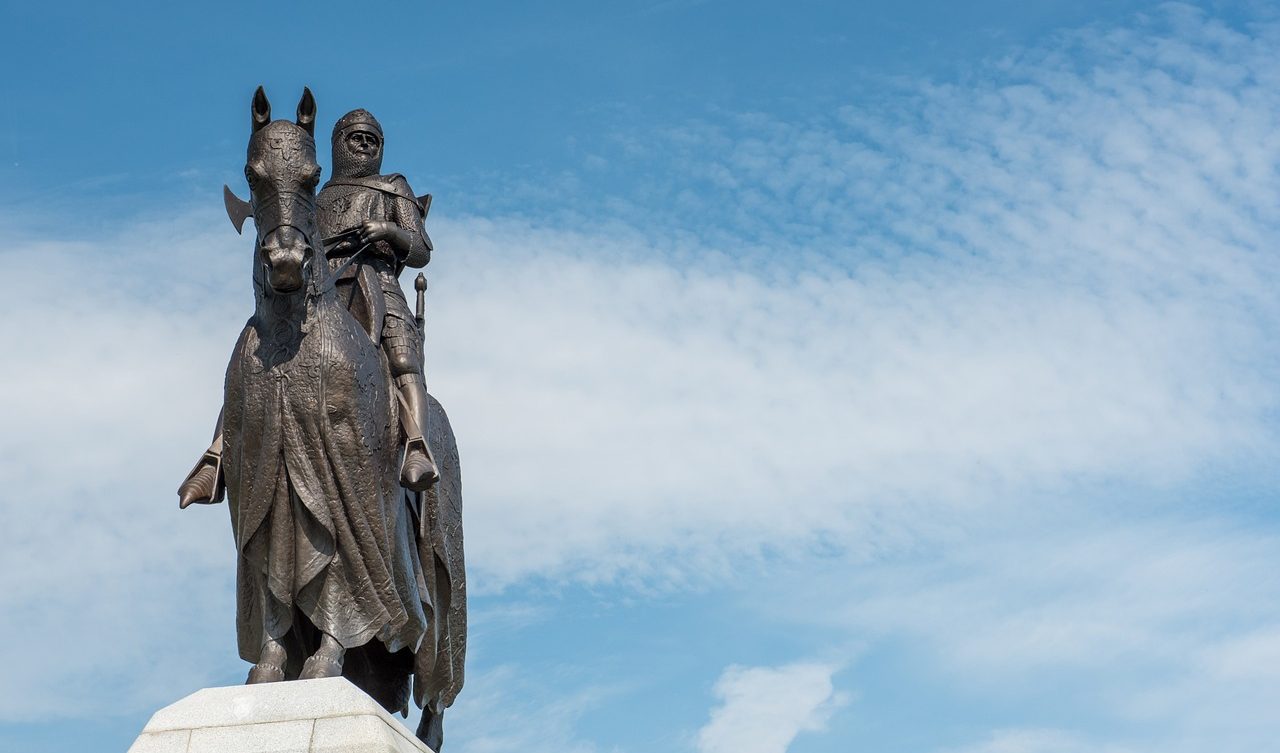Background
The Battle of Bannockburn occurred during the ongoing struggle between Scotland and England, which had begun with the death of the Scottish king Alexander III in 1286 and the disputed succession that followed. After years of English intervention and military occupation under Edward I, Scotland had experienced a turbulent period of resistance, led by figures like William Wallace and Robert the Bruce.
By 1314, Robert the Bruce had established himself as the leading figure in the Scottish fight for independence. He had been crowned King of Scots in 1306 but faced years of war against the English and their allies. By the time of Bannockburn, Bruce had successfully waged a guerrilla campaign and reclaimed much of Scotland, though important castles remained under English control, including Stirling Castle, a strategically vital stronghold.
Stirling Castle was under siege by Robert the Bruce’s brother, Edward Bruce. To break the siege, King Edward II of England assembled a massive army, reputed to be one of the largest ever to invade Scotland, and marched north to relieve the castle and crush the Scottish resistance.
The Forces
- The Scottish Army: Robert the Bruce’s forces numbered around 5,000–10,000 men, mostly infantry armed with spears. They were significantly outnumbered by the English but were highly motivated and well-led. The Scots employed schiltrons, tightly packed formations of spearmen, which were particularly effective against cavalry.
- The English Army: Edward II’s army was estimated to be between 15,000–20,000 men, consisting of heavily armed knights, infantry, and archers, including the famed English longbowmen. The English force was well-equipped but lacked cohesive leadership, as Edward II was not as skilled a commander as his father, Edward I.
The Battle: June 23–24, 1314
Day 1 – June 23, 1314
On the first day of the battle, Edward II’s army arrived near Bannockburn, a boggy area south of Stirling. The Scots, led by Robert the Bruce, had prepared their position carefully, choosing ground that limited the advantage of the English cavalry. The Scots had blocked key approaches with natural obstacles and pits dug in the ground.
The battle began when an English vanguard, led by Sir Henry de Bohun, spotted Bruce. De Bohun, seeking glory, charged Bruce in single combat. Bruce, famously armed with only an axe, sidestepped the charge and struck de Bohun down with a single blow, killing him. This act of bravery lifted the morale of the Scots and became legendary in Scottish history.
Following this, the English launched several assaults against the Scottish schiltrons, but they were repelled. The English cavalry found it difficult to manoeuvre in the confined terrain and were repeatedly driven back by the disciplined Scottish infantry.
Day 2 – June 24, 1314
On the second day, Edward II ordered a full-scale attack. The English army advanced across the Bannockburn, a stream running through the battlefield, but their movements were hampered by the marshy ground and poor coordination.
The Scots, under Bruce’s command, stood their ground and engaged the English in hand-to-hand combat. As the English struggled to maintain formation, their cavalry was blocked by the dense Scottish spearmen, and the famed English longbowmen were unable to find an effective position due to the close combat and terrain.
At a critical moment, Bruce’s small reserve force, made up of camp followers and non-combatants, charged onto the field. Mistaking them for fresh reinforcements, the already demoralised English forces panicked. This sudden collapse of morale led to a chaotic retreat.
King Edward II fled the battlefield, narrowly escaping capture, while much of his army was slaughtered or taken prisoner. The English defeat was total, with thousands of soldiers killed and captured. Scottish casualties were much lighter, and Robert the Bruce’s victory was complete.
Aftermath and Significance
The Battle of Bannockburn was a turning point in the First War of Scottish Independence. The victory greatly strengthened Robert the Bruce’s position as King of Scots and marked the decline of English attempts to control Scotland for the time being. Although the war continued for several more years, the victory at Bannockburn effectively secured Scottish independence.
In 1320, the Declaration of Arbroath was sent to Pope John XXII, affirming Scotland’s independence and Bruce’s right to rule. Although England would not officially recognize Scotland’s independence until the Treaty of Edinburgh-Northampton in 1328, Bannockburn had ensured that Bruce’s authority as king was secure, and it would take many more years before England would seriously threaten Scotland’s sovereignty again.
Legacy
The Battle of Bannockburn became a symbol of Scotland’s fight for freedom and is celebrated in Scottish culture and history. Robert the Bruce’s leadership at the battle cemented his status as one of Scotland’s greatest heroes. The battle is often remembered as a triumph of strategy, terrain, and morale over a larger, more heavily equipped force.
Today, the site of the Battle of Bannockburn is commemorated by a visitor centre and monuments, including a famous statue of Robert the Bruce. The battle continues to be celebrated in Scottish memory, especially as a symbol of resilience and independence.


